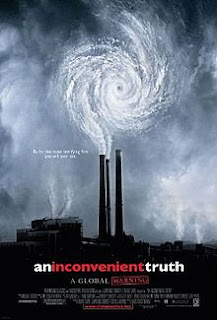Sadly, all good things must come to an end. It is now time for me to finish my blog and carry on with my undergraduate thesis. But before I say goodbye to you all, I feel that it would be appropriate to summarise what we have learned through the course of this investigation and to draw some conclusions regarding the future of the Bond Cycles theory.
So far we have looked at the science behind the Bond events - what they are, how they are expressed in the palaeoclimatic records and what causes them. The key reading on this topic was the original paper by Bond et al. (1997), where the theory is proposed, as well as a number of subsequent research articles (e.g. Bond et al., 2001). Since there is no consensus on how to interpret Gerard Bond's findings, I have tried to familiarise you with the ongoing debate surrounding this new theory. The key papers that provided an excellent review of the vast majority of the scientific work in that area were by Butikofer (2007) and Wanner and Butikofer (2008), even despite the fact that the authors decided on the lack of supporting evidence to conclude on the presence of the 1500-years climate cycles. Finally, I have provided some examples of how Bond event have modified the contours of human history in the Holocene. From the adoption of agriculture to the collapse of Akkadian Empire, to ice skating on the Thames it has definitely been an exciting journey through the millennia.
Unfortunately, strict time frames meant being highly selective when choosing a topic. In trying to give you a flavour of as many things as possible, I feel like some discussions could definitely benefit from more depth. Thus, the debate, surrounding the Bond oscillations theory, is much more complex than presented, and probably needs a separate blog dedicated to it. Similarly, I have provided an overview of only some of the historical events, triggeres by the colder conditions in the North Atlantic, while in reality the influence of those conditions on the whole human activity has been truly collossal! However, for every post I have provided a list of references, so that if you found the topic pretty interesting you could undertake some additional research.
Although we have spent most of the time in the past travelling through the Holocene, in my previous post I have quickly looked at the future possibility of abrupt Younger Dryas-like climate change event and I have concluded that the thermohaline circulation is unlikely to shut down in the near future. Here are some more opinions on whether the Younger Dryas could happen again:
NASA: Unlikely. When it occured previously the world was a very different place with major ice sheets in areas that are now much warmer. The differences in freshwater in the North Atlantic projected for the next 50 to 100 years are much less than the melting that was going on then. However, while this scenario is unlikely, scientists continue to make observations that are relevant to this question and refine the models that are used for climate change scenarios.
NSIDC*: Past events, like the Younger Dryas, show that climate can respond in rapid and hard-to-predict ways to slow persistent forcings (a push on the climate system, such as excess heat in the atmosphere or ocean, wind shifts, or density changes in ocean water). One of the major differences between the present-day situation and the past is that the current forcing, greenhouse gases in the atmosphere, is unlike forcings that led to past climate changes (such as changes in Earth's orbit, or solar influences). Thus, the future course of Earth's climate is hard to forecast, since no simple analog exists in the recent record of natural changes.
So what was the point of all this? Why did I choose to prove that the Dansgaard-Oeschger events were not limited to the last glacial rather than talking about things that are currently in the news: pollution, ocean acidification or hurricane Sandy?
Just like in many disciplines, in climatology the past is very often the key to the present and/or the future. It is only after gaining a solid understanding of the way the climate system operates, environmental policies can be developed. The politicians may promote the view of a global warming armageddon or argue that it is a myth, but what the public really needs is the background knowledge that will help them to make an informed decision. This video has been brought up by my fellow bloggers on many occassions and is just too good not to share. It is actually talking about sea-level rise, rather that climate dynamics, but still illustrates my point perfectly:
The Bond Cycles theory is one of the main topics for the The UK Geological Society Conference on the topic of Holocene Climate Change this April. The conference aims to determine the extent to which Holocene rapid cooling events fit into a proposed 1500-year pattern. I feel like this could be a very important date for the future of Gerard Bond's idea and impatiently await the future debate.
Although this research is now over, my interest in palaeoclimatology is definitely not. I really hope you enjoyed my first attempt at blogging and I would greatly appreciate any feedback you may have for me! Finally, if you have any questions, please write them in the comments section and I will do my best in trying to answer them.
*National Snow & Ice Data Center







